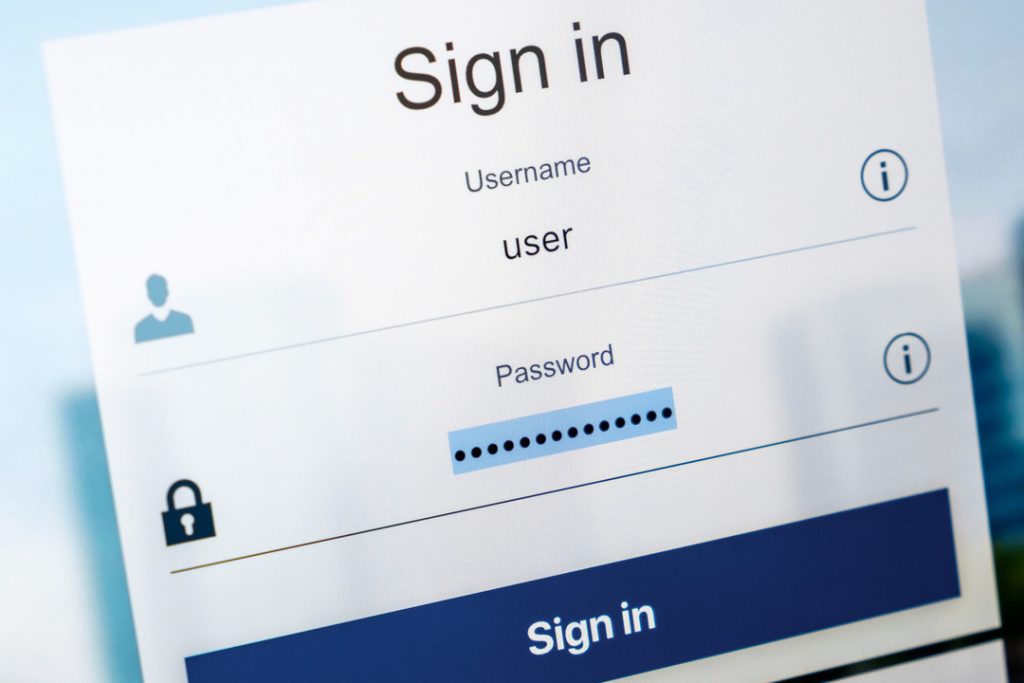5 Tips For Safer Password Protection.

Passwords are essential for safeguarding various aspects of our lives, including financial accounts, business operations, and even appliances and security in our homes. A user’s password is the first line of defense to prevent misuse or theft of personal or confidential information.
Managing multiple passwords with varying requirements can be a daunting task. Read our 5 tips for effective security measures when it comes to protecting your passwords.
1. Use a strong password
The predominant type of password attack is a brute force attack where a hacker tries to guess the password themselves. It is a simple yet reliable tactic for gaining unauthorised access to individual accounts and organisations’ systems and networks. The hacker tries multiple usernames and passwords, often using a computer to test a wide range of combinations, until they find the correct login information. That is why it is important to ensure the following when choosing a password;
- Make passwords long to increase security by adding more characters and making it harder for attackers to guess.
- Avoid common phrases and simple patterns like dictionary words or numerical sequences, as they are easy for others to guess.
- Do not use personal information like names or birthdays in passwords, as this information can be easily found online.
- Use a mix of characters, including uppercase letters, lowercase letters, numbers, and special characters, in your password to enhance security. Avoid using common substitutions like replacing letters with symbols, as cybercriminals are aware of this tactic.
- Refrain from using the same password for multiple accounts to minimize the risk of further security breaches in the event that one account is compromised.
2. Use a password manager
There are various types of password managers available, each differing in quality and level of security. When selecting a password manager, it is important to conduct thorough research to verify the vendor’s credibility and ensure that the product includes robust security and privacy features, as well as receives regular security updates.
Different password managers offer various features, so it is advisable to prioritise which features are essential for your needs. Consider whether the password manager does the following:
- Offers a family plan option
- Allows password management across multiple devices
- Supports all the devices you utilise
- Guarantees that only you have access to your saved passwords, with no access granted to the password manager company.
Several password managers are free, while some come bundled with specific devices and software programs.
3. Utilise Two Factor Authentication (2FA)
2FA is an additional security measure implemented to verify the identity of individuals attempting to access an online account. Upon entering their username and password, users are prompted to provide a second form of verification. This second factor may fall into one of the following categories:
- Something you know: This could encompass a personal identification number (PIN), password, answers to security questions, or a specific keystroke pattern.
- Something you have: Typically, this involves an item in the user’s possession, such as a credit card, smartphone, or hardware token.
- Something you are: This more advanced category may include biometric data like fingerprints, iris scans, or voice prints.
With 2FA in place, an unauthorized person gaining access to just one of these factors will not be able to access the account. This means that even if a password is compromised or a device is lost, the likelihood of someone else having the second-factor information is minimal. Proper implementation of 2FA allows websites and applications to have a higher level of confidence in verifying the user’s identity and granting access to the account.
The most effective method of 2FA is through an authentication application which can work without a carrier network and deletes all codes sent typically within 30 to 60 seconds. 2FAs are offered as options on a number of different sites including Facebook, Paypal, Google, LinkedIn and Dropbox.
4. Limit login attempts
While not a failsafe against password attacks, limiting the number of login attempts is a strategy to impede the progress of such attacks. There are two ways to implement this. Firstly, after entering incorrect login information, users will be prompted to wait before trying again. The waiting time will increase with each wrong attempt, similar to some smartphone security features. The second method involves setting a maximum number of login attempts before the user is locked out of their account and required to provide additional verification. Both methods can be effective, and it is advisable to incorporate notifications for each login attempt or multiple attempts. This feature is commonly seen in applications like Facebook and Gmail, where users receive email notifications to verify their identity when logging in from a new device.
5. Beware of public WiFi
Utilizing public Wi-Fi networks, commonly found in cafes or shopping centers, may be convenient however, it is important to note the significant security risks associated with them. When connecting to such networks, it is possible for others sharing the network to intercept your online communications, potentially compromising sensitive information, such as login details.
It is advisable to refrain from logging into sensitive accounts or conducting financial transactions while connected to public Wi-Fi. Instead, opt for a trusted and secure internet connection, such as your home Wi-Fi or a Virtual Private Network (VPN), to safeguard your data.
Follow these five tips to substantially improve the security of your online passwords and better protect your personal information from cyber threats. Password security is a critical aspect that should not be overlooked. Investing time and attention to the creation and management of strong passwords is a worthwhile investment considering the potential risks involved.